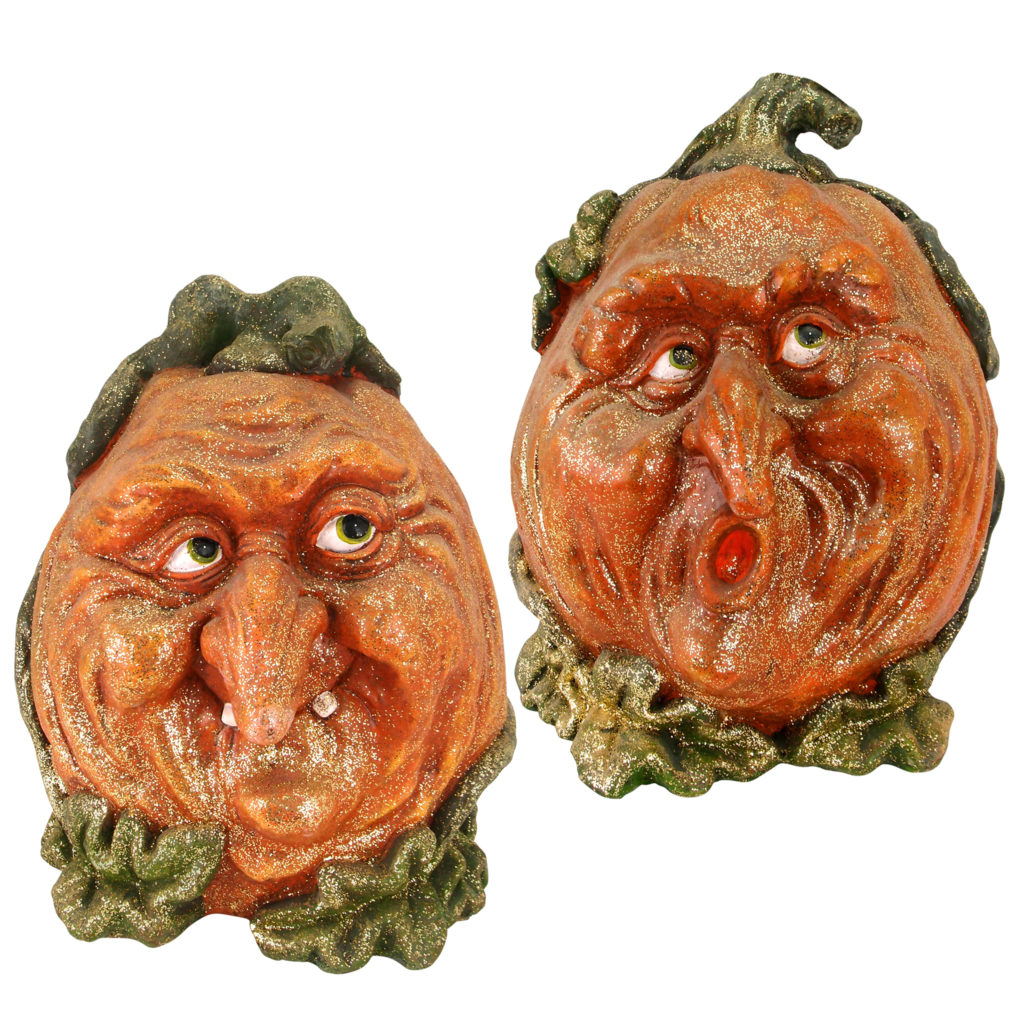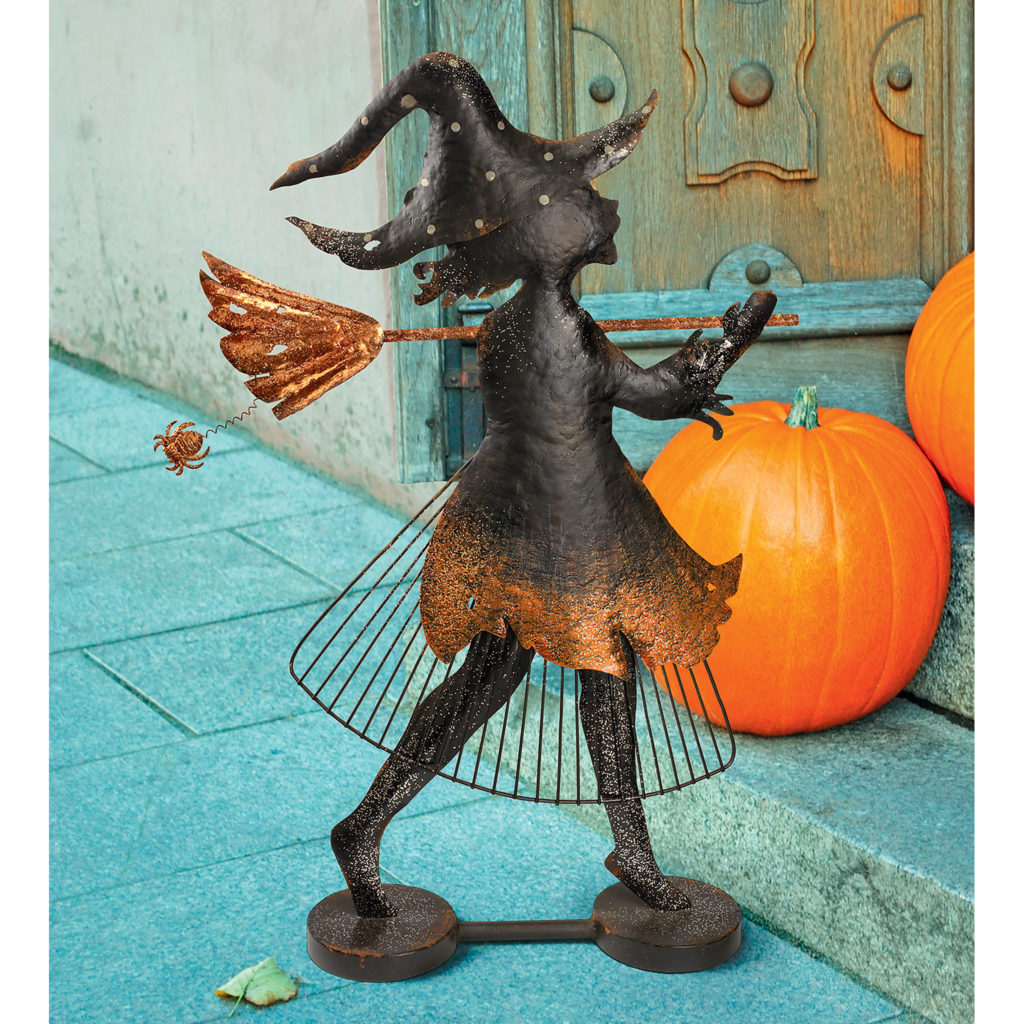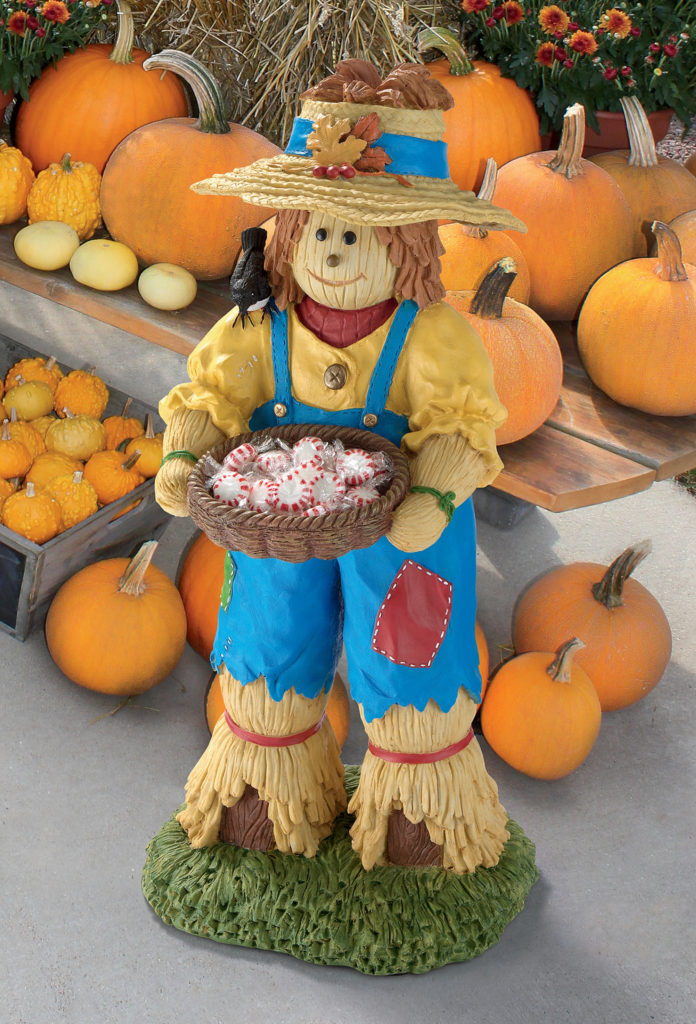Have you ever wondered where Halloween and its traditions came from? Or what jack-o-lanterns are for? Or how trick-or-treating got started? Let us tell you a tale…
CELTIC BEGINNINGS

The beginnings of Halloween are found in an over 2000 year old Celtic celebration known as Samhain (pronounced “sow-in”) meaning summers end. This Celtic festival marked the end of the harvest season, and the beginning of the cold winter and dark days. Samhain began at sunset on the 31st of October and was traditionally celebrated for three nights by Celtic people in what is now Ireland, the United Kingdom, and even to the north of France.
Festivities included bonfires, feasting, dancing, and creating altars to honor the deceased. It was said that, on this night, the veil between the living and the dead was at its thinnest, allowing souls of the dead to reenter the living world.
Display one of these “lost souls,” the Zombie of Montclaire Moors Statue (DB383020) from Design Toscano. He is frightfully good fun and so realistic you can almost hear him moaning. With the eeriest undead eyes, this Zombie is not for the faint of heart. Neighbors will watch as the Zombie of Montclaire Moors climbs out of his front yard “grave” to receive screams of delight.
In 43 AD the Romans arrived and fought the Celts in a four-hundred-year-long war. Bringing with them the festival of Feralia, a day to honor the passing of the dead, and Pomona the goddess of fruit and trees, these celebrations were also held in autumn. It is possible that this is where the addition of apples to Halloween originated. As it often happens when cultures merge, elements of Roman beliefs were combined with the Celtic Samhain. Now the apple is an important symbol of life and immortality in Celtic traditions. Cut crosswise an apple reveals a five pointed star like a pentacle, a symbol of the goddess.
Sometime between then and when Christianity began to rise, the custom of wearing costumes began and people dressed as ghouls and demons hoping to trick the dead that walked on Halloween night into believing that they too were dead.
In 609 AD Pope Boniface IV designated the 1st of November as the Feast of All Saints or in Middle English, “Alholowmesse.” So the night before became known as All-Hallows-Eve. In 837 AD the church made the second of November All Souls Day to honor the dead.
Later, there were many references to wearing a disguise on the night of “All Hallows Eve” to keep you safe from revenants, spirits and bogeys (all words for ghosts in the Middle Ages.)
TRICK-OR-TREAT!
In the Middle Ages the church modified and incorporated versions of the older religions as people were slow to change and give up the old ways of celebrating the harvest and coming winter. One of the traditions that began in the Middle Ages was when, on All Hallows Mass, people went door-to-door begging for food or money–called “souling”–in exchange for a song or a prayer said in honor of the dead. Likewise during this time the church attempted to change the tradition of dressing up as demons to frighten off, or blend in with, the spirits to instead disguising themselves as saints and angels. In Scotland and Ireland this practice of dressing up was called “guising” themselves and was met with little success.
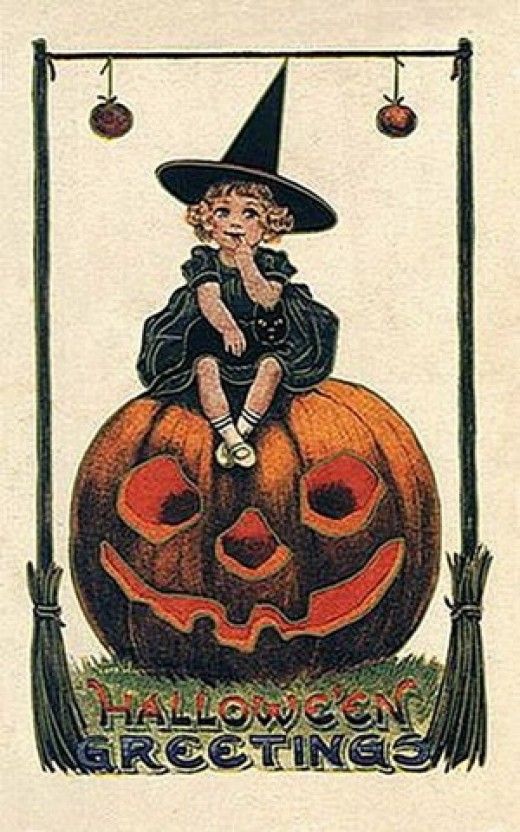
In the 16th century there are many accounts of children going from house to house reciting verses in exchange for food and, if they were not welcomed, giving out dire warnings of misfortune. Thus, trick-or-treating was born.
In Ireland, people held parades following a leader dressed in a white robe with a mask and the head of an animal and, at times, begged for food. The Scots also walked in processions carrying torches and lighting bonfires to ward off witches and evil spirits.
During the Victorian era (1837-1901) an autumn festival and play parties were common on All-Hallows-Eve, and a Scottish tradition of torchlight parades were held as part of the festivities as everyone, including Queen Victoria, marched along to the pipers.
The first reference to trick-or-treating was an article printed in 1911 in Ontario, Canada where children went door to door asking for sweets or threatening to cause mischief. Pranks have become part of this Old World tradition making for angry land owners who found their belongings, barrels, wagons, and animals moved around come morning.
One theory holds that, by the 1930s, due to excessive Halloween pranking in the U.S. which often became acts of vandalism and violence, communities adopted the widespread practice of community-based trick-or-treating. This practice was paused with the outbreak of WWII due to sugar rationing.
By the 1950s, Halloween customs of modern day, door-to-door trick-or-treating by children quickly became the norm, spreading culturally as candy companies launched national advertising campaigns.
THE LEGEND OF JACK-O-LANTERNS
An old Irish folk tale tells the story of the Jack-O-Lantern and goes something like this…
One fateful night Stingy Jack, a rogue and deceiver, met the devil who had come to collect his soul. Jack thought fast and made a request to drink one last ale. When Jack suggested the devil transform himself into a silver coin to pay the bill, Jack put the coin into his pocket with his cross. This kept the devil from changing back into his previous form. Begging to be released, the devil agreed not to take Jack’s soul for ten years. At year ten Jack pulled off a second trick and, to be let free, the devil agreed to never take Jack’s soul. When Jack died and tried to enter heaven he was denied entrance because of his sinful lifestyle. So he tried to enter hell only to be denied again and given a burning coal ember by the devil to mark him for eternity. From that day to this, Jack has been doomed to wander the world with his ever-burning lantern.
To frighten Jack away people began putting out a hollowed turnip, beet or potato with a light in it. These became the first “Jack-O-Lanterns.” Though there are many different versions of this folk tale, the tradition continues.
As Irish emigrants moved to America squashes and pumpkins, both cheap and prevalent, were used for Jack-O-Lanterns because their larger, frightening faces were easily carved on the night that Jack was said to walk.
The more humorous faces of our Pumpkin Patch Jack-O-Lanterns Statues (FU98271) will garner startled expressions when guests are greeted by Rogue and Scamp hidden among your fall foliage. These creatures of the night with warty noses and sparkling eyes, resting on green leaves and pumpkin vines, will give you the giggles. Display them on the front porch or on a buffet table and delight your party guests with this pair of Design Toscano exclusives that, unlike real gourds, will last year after year.
Bask in the spellbinding glow of the Haunted Graveyard Skull Lantern Illuminated Sculpture (FU84155) with creepy color changing eyes that will light up the night. Cast in designer resin and hand painted in aged bone and gothic black with a wooden carrying handle, this Design Toscano exclusive can be also be hung from a garden plant hook where it is sure to give your trick-or-treaters a fright.
Celtic beliefs were described by the Scottish poet Robert Burns’ 28 stanza poem, Halloween in a mixture of Scots and English in 1785. Here is a translated bit: “(Halloween) is thought to be a night when witches, devils and other mischiefmakers being abroad in their baneful midnight errands…”
WITCHES FLY ON THE SCENE
“Spell Casting in Progress” means that the witches are up to pure magic! The Witch’s Cat Spell-Casting Wall Sculpture (CL69238), featuring an enchanting black cat in a witch’s hat and green background with bright red spider, will charm gypsies, wiccans, and cat lovers alike. For Halloween and beyond!
While our unique set of fierce witches will have all your guests checking out the humorous details of our Bewitching Witches Statue Collection (QL930605). Both the Book of Spells, with a crafty witch reading on a log, and the frightful Cauldron of Beauty witch and her froggy friend, are exclusive to Design Toscano. Getting up to some hocus pocus, this set of two witches with wild feathery hair will delight with black cat, owl and wide eyed frog as familiars.
Bewitched Blaise Metal Silhouette Witch Statue (FU82955) is an adorable witch on the move with skirts swinging, broom whisking and tiny spider hanging on tight. This black magic woman is a Toscano exclusive, created by artist Candice Pennington in hand-hammered metal, painted with ghoulish ebony and copper tones. Standing thirty-one inches tall, Blaise will be a spectacular addition to your ghoulish get-together.
Waving in the air, our Crash Landing Wicked Witch Legs Garden Stake Statue (AL62383) will add some wicked fun to your yard display. Created exclusively for Design Toscano in designer resin with bright striped leggings and shiny black heeled boots, the Wicked Witch Legs Garden Stake is fiendishly fun and might even keep someone from dropping a house on you!
PARTY LIKE THE DEAD
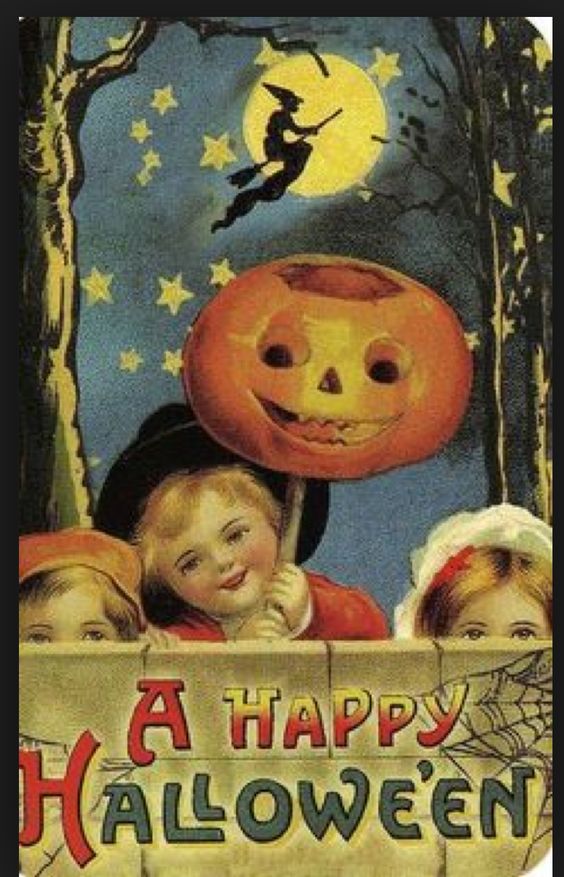
The roaring 1920s brought the start of recognizable Halloween parties, for both adults and children, where telling ghost stories and fortune telling games like bobbing for apples were enjoyed by all. People widely started decorating for the season with carved pumpkins, black cats and the familiar black and orange color scheme, they even started sending postcards wishing family and friends “Happy Halloween!”
As for today, Halloween parties with elaborate decorating schemes have become massive and even more haunted and scarier than ever!
The Dia de los Muertos, or Day of the Dead, is a Mexican holiday celebrated just after Halloween on November 1st and 2nd, where families create ofrenda, alters to departed loved ones, decorate tombstones with paper garlands, marigold flowers, and candles, and leave food and drink to welcome the spirits of their ancestors. Children go about asking for sugar skull treats, and the days and nights are filled with music and dancing. The holiday has become increasingly popular in Mexico and in America, where it has merged with Halloween inspiring both decorating trends and celebrations.
Toscano’s exclusive Catrina couple, the Day of the Dead Skeleton Bride and Groom Statue (QS23564) is hand crafted from designer resin. This deadly romantic skeletal twosome stands 10-inches tall, the bride with a lace wedding dress and groom with a top hat and tails, and will add a whimsical reminder of the cycle of life to your celebration.
CELEBRATE ALL SEASON LONG
The delightful Hayman the Scarecrow Statue (EU9295), with his woven basket to fill with seeds for birds or treats for guests, is a nearly two-foot tall Design Toscano exclusive, hand painted in bright seasonal colors. Hayman the strawman with black crow on his shoulder, can be displayed anywhere to help celebrate the harvest all season long.
Design Toscano will help you throw a spirited celebration, create a bewitching pathway, or design the scariest front porch ever; check out Toscano’s extensive collection of reapers, zombies & tombstones, vampires & bats, witches, ravens & cats, and skulls & skeletons for inspiration!
Looking to decorate a Gothic haunted house or Medieval castle, or an Egyptian tomb? Check out our featured New Halloween creations or Game of Thrones-themed décor blog posts and go online to DesignToscano.com to discover countless items to prop up your Halloween display.
For the most spook-tacular Halloween ever, think of Design Toscano first as the witching hour approaches!
Posted by Sue Mell


